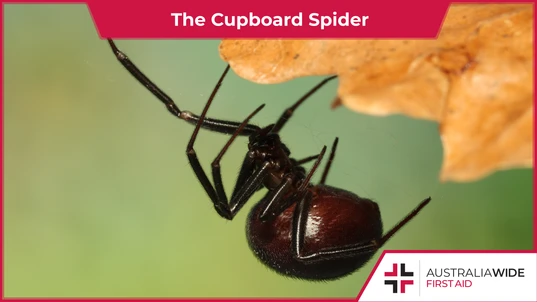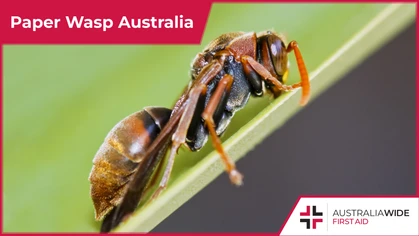How Dangerous is the Cupboard Spider?

Bites and Stings

The Cupboard spider is a common guest in and around Australian houses. They are often mistaken for Redback spiders, as both are of similar shape and size. Though the Cupboard spider is not as deadly as the Redback, their bites can still cause several symptoms.
In this article, we look at the Cupboard spider (Steatoda sp.), which closely resembles the deadly Redback and is a common guest in Australian houses. We also cover spiders and their bites in our general and childcare first aid courses. We have training locations in every state, capital city, and major town throughout Australia. Head to our website to find and enrol in a training location near you today.Appearance
Like most members of the family Theridiidae (comb-footed spiders), the Cupboard spider has the following identifying characteristics:- Females have an average body length of 10 mm while males are slightly smaller at 4 mm long
- Like the Redback spider, which also belongs to the Theridiidae family, they have a pea-shaped abdomen and slender legs, though males tend to be more elongated
- Their body colour can range from brown to black, and females tend to have a white or beige crescent-shaped marking on the top of their abdomen
Distribution and habitat
Cupboard spiders have been known to build their tangled looking webs under rocks, timber, and bark in temperate and tropical climates throughout the world. Some male specimens can also be found walking among leaf litter as ant mimics, spiders that imitate other insects to prey upon them without being detected. There are two cosmopolitan species of Cupboard spiders that are commonly found in dark, sheltered, and undisturbed places around the house or garden - Steatoda capensis and Steatoda grossa. Also known as Brown house spiders, these two species prefer to build their webs:- Among furniture and general refuse
- Under empty pot plants and garden benches
- Cupboard spiders also use their webs to house their whiteish egg sacs
Danger
Unlike their look-a-like, the Redback spider, Cupboard spiders are not considered especially dangerous. They bite infrequently, and their bites may only result in headache, nausea, and small blisters around the affected area. If you are responding to a bite from a Cupboard spider, reassure the casualty and apply a cold compress to the affected area. Then, monitor for signs of deterioration or anaphylaxis, and call Triple Zero (000) for an ambulance accordingly.Final thoughts
Commonly found around the house or garden, the Cupboard spider (the Brown house spider) is relatively harmless, and their bites can most often be treated with a cold compress. For more tips on treating bites from some of Australia's deadliest spiders, book a general or childcare first aid course with us. Head to our website to find and enrol in a training location near you today.
Originally published at
https://www.australiawidefirstaid.com.au/resources/cupboard-spider
as part of the Australia Wide First Aid Articles Library









